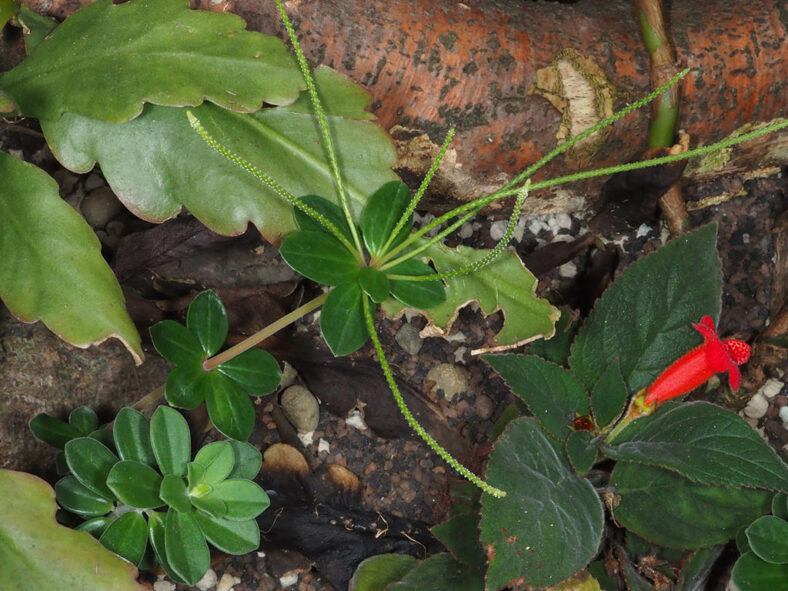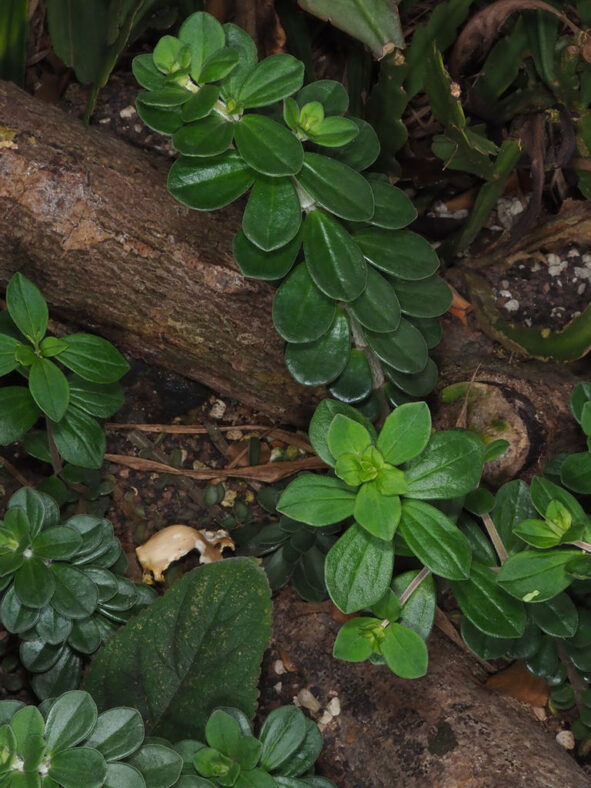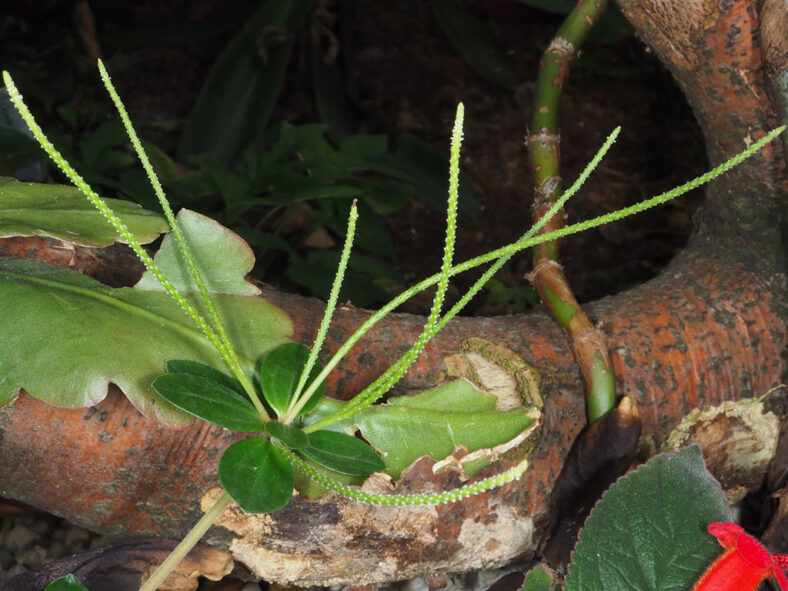Peperomia verticillata is quite impressive and makes an excellent centerpiece for collections or a beautiful addition to your home as a houseplant.
Scientific Name
Peperomia verticillata (L.) A.Dietr.
Synonym(s)
Piper verticillatum, Troxirum verticillatum
Scientific Classification
Family: Piperaceae
Genus: Peperomia
Etymology
The specific epithet "verticillata" (pronounced "HALL-ee-eye") means "having whorls; verticillate" and refers to the leaves of this species that grow in whorls of five along the stems.
Origin
Peperomia verticillata is native to the Caribbean Islands, where it often grows as an epiphyte.
Description
Peperomia verticillata is a small, semi-succulent shrub with upright branches bearing rounded leaves. It can reach a height of up to 20 inches (50 cm). As the plant matures, its upright stems can spill out of the pot due to their weight. The leaves are arranged in whorls of five along the stems, with a grey-green color on the upper surface and red hues on the underside.
During the summer, Peperomia verticillata produces inconspicuous greenish-white flowers on slender spikes.

How to Grow and Care for Peperomia verticillata
Light: Peperomia verticillata thrives in bright, indirect light but should be protected from direct sunlight. It also grows well under grow lights.
Soil: Selecting the right soil is essential for this plant's healthy growth. Use a well-draining potting mix that is also rich in nutrients.
Temperature: Peperomia verticillata does well in the relatively cool conditions found in most homes, but it dislikes dry air. It grows best in USDA Plant Hardiness Zones 10a to 11b, with average minimum winter temperatures ranging from 30°F to 50°F (- 1.1°C to 10°C).
Watering: The biggest problem in growing this plant is typically related to watering. It prefers consistently moist soil but is very sensitive to overwatering. During the growing season, water the plant regularly and mist it daily to maintain high humidity. Water sparingly in winter.
Fertilizing: Apply a balanced fertilizer diluted to half-strength during the growing season.
Repotting: Peperomia verticillata prefers to be slightly pot-bound, so be careful not to overpot it. Repot it in the spring to refresh the soil, but place it back in the same-sized container after pruning the roots, or move it up to one pot size.
Propagation: This plant can be propagated by seeds or by taking leaf and stem cuttings, preferably in spring or summer. Using a rooting hormone can help increase the chances of successful propagation. Seed propagation is less common due to slower germination rates.
Learn more at How to Grow and Care for Peperomia.
Toxicity of Peperomia verticillata
Peperomia verticillata is considered a non-toxic plant, making it safe for children and pets.
Links
- Back to genus Peperomia
- Succupedia: Browse succulents by Scientific Name, Common Name, Genus, Family, USDA Hardiness Zone, Origin, or cacti by Genus
Photo Gallery
Click on a photo to see a larger version.


